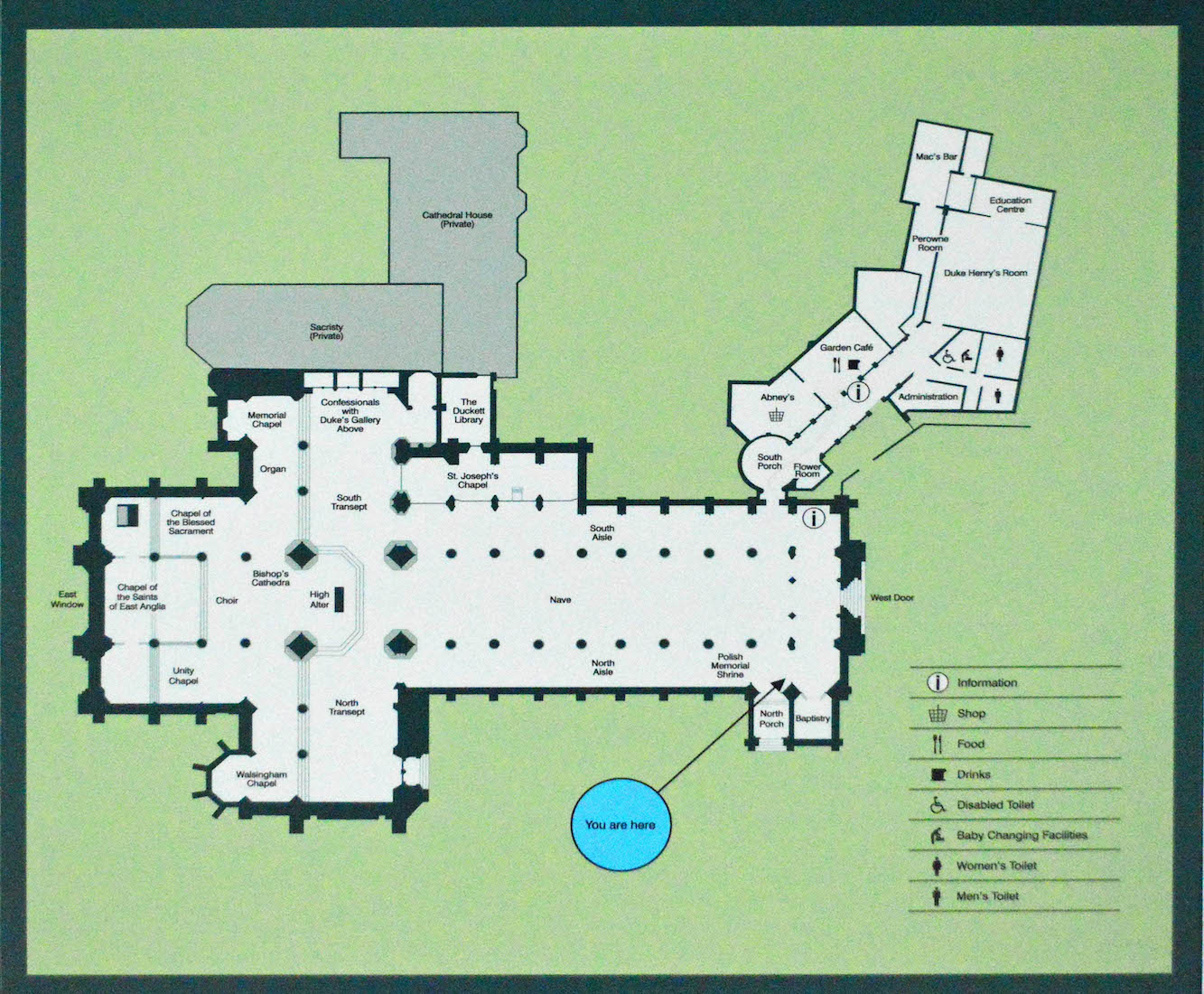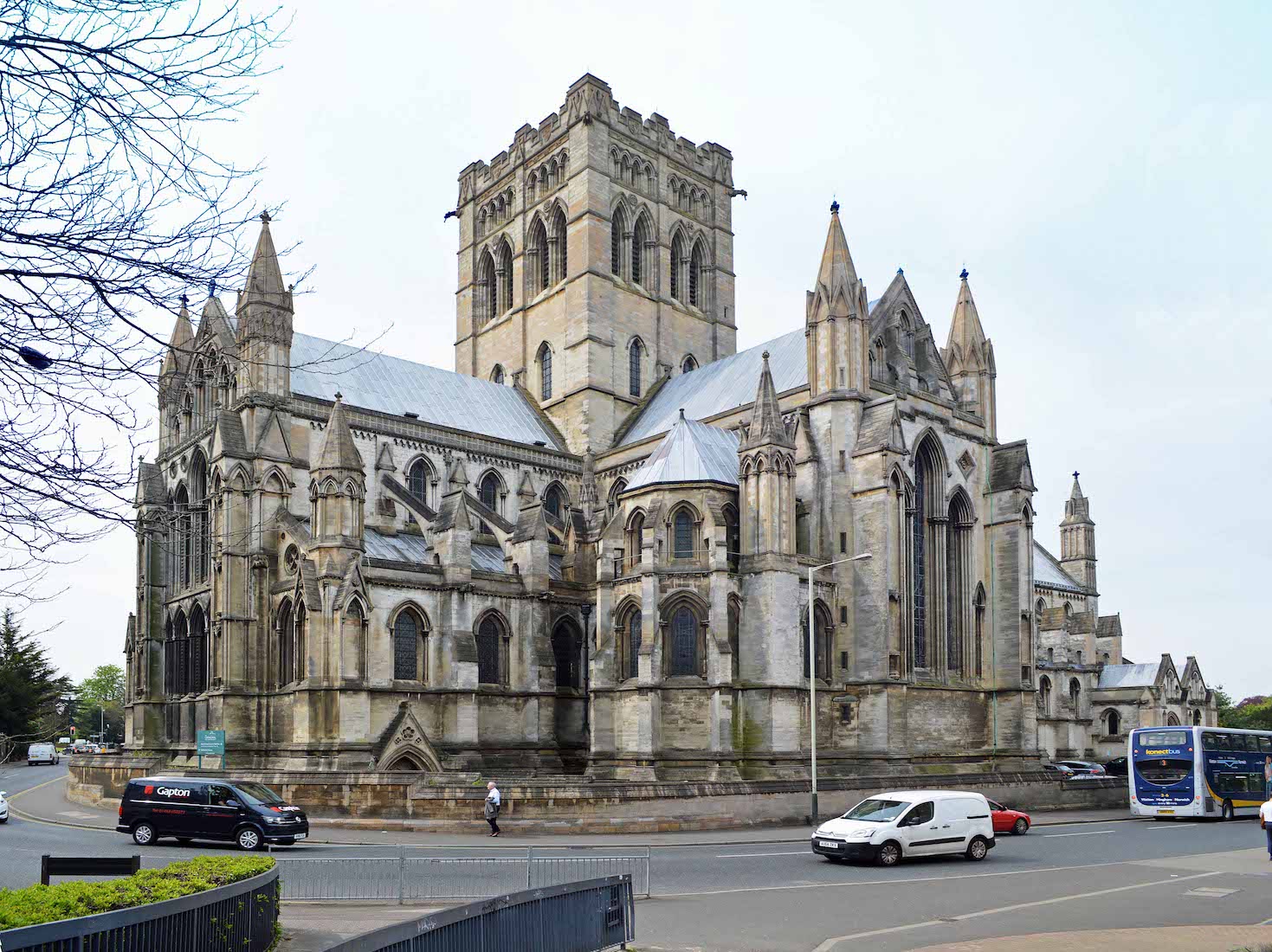WELCOME TO
NORWICH CATHEDRAL
NORFOLK, ENGLAND CATHOLIC
PAUL SCOTT

This plan of the Catholic Cathedral of St John the Baptist comes from a Cathedral poster. Its orientation is a little confusing as it has the sanctuary in a perceived westerly direction – exactly the opposite of the tradional liturgical East, and almost opposite to its actual geographical placing. We clarify this in the following satellite view, #1.
The Cathedral is actually cruciform in shape, with chapels added to the transepts and the St Joseph’s Chapel extending from the nave. Major extensions are the grey sacristy and Cathedral House (top left) and the so-called Narthex at top right. The square central tower rises up above the crossing.
A very brief history of the Cathedral is given below. However, if you want to begin touring the Cathedral immediately, tap / click on START .
Intermediate points of the tour can be accessed directly by a tap / click on the following links:
NOTE ON MAGNIFYING IMAGES
With this website format the images are large enough for most purposes. If there is a need for greater magnification of an image, go to the identical photo on
https://www.flickr.com/photos/paulscottinfo/albums
and use Command - + (Mac) or Windows - + (Windows).
HISTORY
[Wikipedia]
The cathedral, located on Unthank Road, was constructed between 1882 and 1910 to designs by George Gilbert Scott, Jr. as a parish church dedicated to John the Baptist, on the site of the Norwich City Gaol. The funds for its construction were provided by Henry Fitzalan-Howard, 15th Duke of Norfolk. He funded it as a generous gift to the Catholics of Norwich as a sign of thanksgiving for his first marriage to Lady Flora Abney-Hastings.
In 1976, it was consecrated as the cathedral church for the newly erected Diocese of East Anglia and the seat of the Bishop of East Anglia. In 2014, for the first time since 1558, a Pontifical High Mass was celebrated in this episcopal see’s cathedral.
It is the second largest Roman Catholic cathedral in England, the largest being Westminster Cathedral. It is one of two cathedrals in the city of Norwich, the other being the Church of England Cathedral Church of the Holy and Undivided Trinity, begun in the Norman style in 1096.



